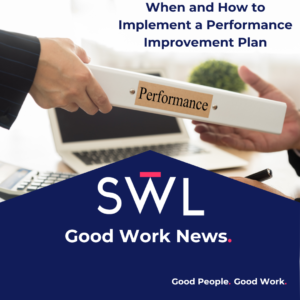By: Amelia Perfetto.
When we hear “toxic workplace,” we picture yelling bosses, bullying and blatant harassment.. But more often toxic workplaces don’t look like that.
They look polite.
They look professional.
Sometimes, they even look successful.

The danger lies in the subtlety. The small, quiet behaviors that don’t grab headlines but chip away at people’s confidence, energy, and trust until the damage is done. Employees may even struggle to articulate what feels wrong. But over time, the cumulative effect of these seemingly small issues can be incredibly damaging to individual well-being, team performance, and organizational success.
Subtle Indicators of Toxicity
Unspoken Expectations
Workplaces where expectations are rarely clarified, but employees are criticized for “falling short,” create environments of constant second-guessing. This ambiguity breeds stress and erodes trust in leadership.
Overemphasis on “Fitting In”
Culture should foster belonging, but when conformity is prized above diversity of thought, employees may feel pressured to suppress their authentic selves. This silences innovation and disproportionately harms those from underrepresented groups.
Polite Dismissal of Concerns
Toxicity can look like smiling managers who listen to concerns but never act on them. The veneer of civility hides the reality: employee voices carry little weight. Over time, this erodes morale and engagement.
Subtle Exclusion
Not being invited to key meetings, being left off emails, or consistently overlooked for projects are quiet but powerful signals that some employees are less valued. These patterns undermine confidence and career progression.
Normalization of Overwork
When “going above and beyond” becomes code for consistently sacrificing personal time, employees quickly burn out. Even without explicit demands, a culture that celebrates constant availability can be deeply harmful.
Silence Around Failure
In workplaces where mistakes are quietly punished through lost opportunities, stalled advancement, or social exclusion, people stop taking risks. Learning stalls, and fear takes the place of growth.
Why Subtle Toxicity is So Dangerous
Subtle toxicity makes you second-guess yourself. Am I being too sensitive? Should I just push through? Meanwhile, stress builds, engagement plummets, and the best talent quietly walks out the door.
For organizations, the cost is steep: burnout, stalled innovation, reputational damage, and even legal exposure. What employers may try to dismiss as “just culture” can easily escalate to a problem with serious implications.
The Role of Culture Reviews
Here’s the good news: toxicity doesn’t have to stay hidden. One of the most effective ways to uncover and address subtle toxicity is through a culture review conducted by a neutral third party. Unlike internal surveys or discussions, which can be clouded by fear of retaliation or mistrust in leadership, third-party reviews provide employees with a safe, confidential forum to speak honestly about their experiences.
These reviews are particularly valuable because:
- They reveal hidden patterns. What may appear to be isolated issues often turn out to be systemic problems once feedback is aggregated and analyzed.
- They build credibility. Employees are more likely to trust the process and share candid input when they know an independent party is collecting and interpreting the information.
- They provide actionable insights. A well-conducted review doesn’t just diagnose problems, it offers practical recommendations for change, tailored to the organization’s specific needs.
- They set a baseline. Understanding the current culture allows leaders to measure progress over time and hold themselves accountable for improvement.
Far from being a punitive exercise, culture reviews are a proactive tool for strengthening workplaces. They give leaders the information they need to address problems before they escalate, while signaling to employees that their voices and well-being truly matter.
Moving Forward
Toxicity doesn’t always announce itself with a bang. More often, it seeps in quietly through subtle signals that go unchallenged. By the time the damage shows, it’s already taken a toll.
That’s why paying attention to these “small” issues matters. It’s how you protect your people, your reputation, and your business.
At SWL, we help businesses take a proactive approach. From guiding culture reviews to advising on legal risks, we partner with leaders to uncover issues before they escalate, and to build workplaces where people actually want to stay. Our team brings a balanced perspective grounded in employment law and informed by practical workplace realities, to help organizations identify risks, foster healthier cultures, and stay ahead of potential legal challenges. We are prepared to guide you through every stage of the process. Because the strongest organizations aren’t just the ones that perform well, they’re the ones people trust.



